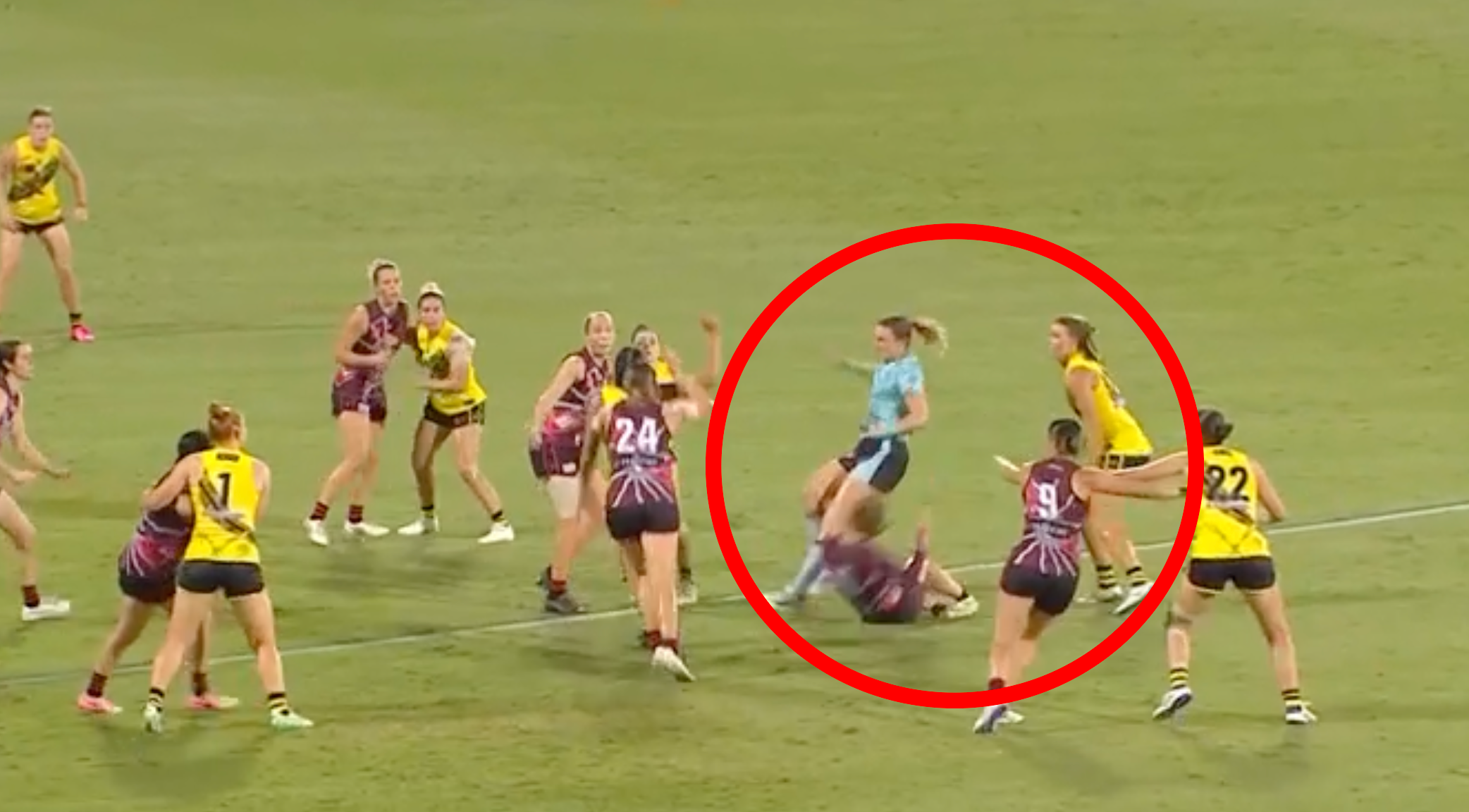The AFLUA welcomes the AFL’s decision to appeal the AFLW Tribunal’s decision to downgrade Eilish Sheerin’s charge for making intentional contact with an umpire.
The decision saw Sheerin walk away with a diminutive $200 dollar fine and free to play.
The incident, which occurred in the fourth quarter of the round 9 clash between Richmond and Essendon, involved Sheerin pushing Essendon’s Georgia Nanscawen into the path of field umpire Samantha Ritchie. Nanscawen fell into Ritchie’s hip, sweeping her legs from under her and causing her to tumble backwards onto the ground.
Sheerin’s actions saw her sent straight to the tribunal by the Match Review Officer on the initial charge of making intentional contact with an umpire.
The Tiger’s case argued that the contact was not intentional but merely careless, representing “good football craft.” They posited that Ritchie’s fall was not due to the force of Sheerin’s push, but rather the area of the body that Nanscawen collided with. Having crashed into Ritchie’s hip was said to have a particularly destabilising effect, causing the fall.
Sheering herself testified, claiming that she is “obviously very strong” and that she was “nudging my player towards the stoppage to create more space for me and a greater competitive advantage.” According to the AFLW’s coverage of the hearing, Sheerin claimed that “she didn’t use her full strength in pushing Nanscawen away to create space at the stoppage, instead claiming that she was merely extending her arms into the side of Nanscawen.”
Fox Sport’s Ben Waterworth reported that “in the lead up to the incident, Sheerin was seen essentially using the umpire as a barrier at two ball-ups. As the umpire moved backwards after throwing the ball up to recommence play, Sheerin pushed Nanscawen to the other side of the whistleblower in an attempt to create seperation from her opponent… But it backfired on the third attempt, with Sheerin’s push resulting in Nanscawen’s head making contact with the umpire’s hip.”
The tribunal agreed that Sheerin’s push lacked intention and enough force to warrant the charge of intentional contact with an umpire. Instead panellists David Neitz, Michelle Dench and chair Renee Enbom KC decided that Sheerin’s actions amounted to careless contact with an umpire.
Enbom made clear that had the verdict gone the other way “then the sanction would have been a significant one, involving far more than a fine.”
Ritchie wasn’t the only umpire to cop it in round 9, with four other cases of careless contact with an umpire being heard at the tribunal this week.
Umpire contact made headlines earlier this year in the AFL when Caroline Wilson reported on Footy Classified on skyrocketing cases of umpire concussions and contact-related injuries.
This year AFL umpires reported 80 cases of umpire contact to the AFLUA, up 82% from 44 incidents in 2023. Umpire contact incidents in 2024 eclipsed 2023’s numbers after just round 15. 62 of these cases involved field umpires.
The huge increase in incidents was attributed to a possible deliberate tactic used by AFL players to force their opponent into the path of the umpire in order to gain separation and first access to the ball.
One incident saw field umpire John Howarth removed from the round 14 clash between Brisbane and St. Kilda after a sickening collision with Paddy Dow. Howarth missed out on umpiring the next week due to concussion.”
After the umpires lodged an official complaint, the AFL was forced to issue a memo to AFL clubs stating that if deliberate umpire contact “is to continue this weekend, we will be coaching our umpires to pay free kicks as per the rules, and the out of zone umpire at Centre Bounce will be watching and adjudicating if a free kick is warranted.”
However, the AFL immediately walked back these measures, issuing a memo to umpires stating that they “are instructed not to pay free kicks for Umpire Contact, unless you are certain the contact was intentional. Umpires are not instructed to adjust their End Zone position/focus at centre bounces, as previously discussed.”
The issue of umpire contact continues to persist across both competitions, causing an increasing number of injuries to umpires.
Article By Jackson Kerr

